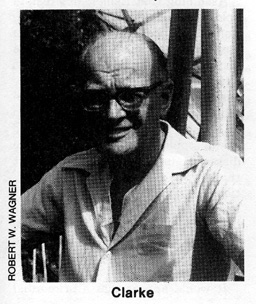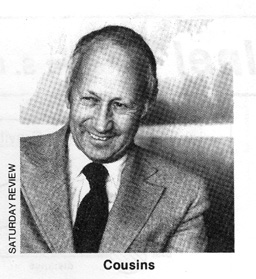Would you like a large beautifully illustrated hard-bound "National Geographic" of the Solar System? Or a hard-bound volume with numerous well-captioned illustrations, many in color, and an easily readable text that tells the story of the evolution and present understanding of the Solar System? If you would, then "New Worlds, Discoveries from Our Solar System" is for you.
"New Worlds" opens with two chapters on the cosmogony of the Solar System. This is an account of what astronomers and astrophysicists believe to be the nature and sequence of events by which the Solar System evolved from the primordial chaos which grew out of the original big bang. Telescopic photographs and the many diagrams present a readily understandable picture of this process for the general reader. The sun itself, the interplanetary space, and the individual planets each have
a chapter to complete the story.
The sun, of course, is our most fascinating star. Thought of in ancient times as a symbol of perfection, the sun fell from such grace when sunspots were discovered. The development of our understanding of the sun from that discovery on is told with text and picture. The relevance of solar science to our daily lives is told in the closing paragraph of the sun's chapter, "The Sun may indeed be the key to our energy future but not necessarily in the form of the relatively simple gathering of its heat energy ... Rather, it could be the understanding of the physical processes involved in generating heat ... that will enable us to develop advanced sources of energy that we scarcely can dream of today. For in our thrust for knowledge about the Sun we are indeed probing into one of the enormous powerhouses of our galaxy."
The chapter, "Between the Planets" may surprise some readers. Interplanetary space is not as empty a vacuum as some might suppose. It contains great quantities of matter, dust, meteroidal material, plasmas, organic molecules and other debris permeated by "A Blizzard from the Sun" as the authors call the solar wind.
Each planetary chapter opens with an account of the early evolution of man's knowledge of the planet derived from earth-based measurements. Maps of the planets drawn from telescopic observations, spectroscopic chemical analysis, infra-red temperature measurements and the like led to many sophisticated speculations and questions about the nature of each planet. The advent of space probes made it possible to resolve many questions and raise new ones. Numerous photographs from space probes are included with captions sufficiently complete for a reader to browse through the pictures and get a good general idea of what has been learned. Along with the pictures are maps of planetary surfaces, diagrams of orbits and such features as the structure of magnetic and plasma fields, etc.
This book was written before the returns from Voyager I started coming in, so that neither the vulcanism on Jupiter's moon, Io, or the ring around Jupiter, is included. One would hope that a second edition will come out to include the results of the Voyager missions.
"New Worlds" would be a most welcome addition to any reader's science library. It would also be an excellent gift choice for a special occasion.
Robert H. Van Horn
Worthington, Ohio
"THE SEARCH FOR LIFE IN THE UNIVERSE"
by Donald Goldsmith and Tobias Owen
The Benjamin/Cummings Publishing Company, Inc., Menlo Park, CA. 415 pages, 1980.
This is a magnificent book which has more than just a little for everybody, and in fact can give a lot to anyone. Although it contains much of the material of a textbook, it is not a textbook. Instead of simply reciting the facts, the authors make it a point to emphasize what is deemed important, or what particular matters are the key to understanding say, the history of Venus. Of course this demands that the authors be extremely knowledgeable themselves, and that their subjective judgments be good, but so they are. Indeed, it is exactly this resultant reflection of the true puzzles, wonderments, and enigmas of modern science which makes the book particularly valuable and separates it in a good way from most of its predecessors.
The contents of the book include far more subjects than the title would suggest. To SETI people, this is not surprising, since it is well known that the abundance of life and the means of searching for it depend intimately on the basic make-up and history of the universe. This book, without trying, brings this home forcefully. There are sections on cosmology, the structure of galaxies, the interstellar medium (where do planets come from?), the evolution of stars (where do elements of life come from?), the chemical nature of life and how chemistry limits the forms of life which may exist. Then there are discussions of the nature of the planets of the solar system and a detailed discussion of the searches which have been carried out for life on Mars. Only on page 325 do we reach the question of extraterrestrial civilizations and the means by which we might detect them. The technical discussions here are more extensive and have more clarity than is usually found. Finally there is a sensible discussion of the phenomenon of UFO sightings and similar fringe subjects.
There is even a very sober and sensible discussion of a recent hot topic, the proposition that the absence of colonists on the earth from other stars is evidence that the extraterrestrials are absent, period. This subject has received a lot of hoopla recently, and the authors handle it adroitly, and, I believe, quite correctly.
This is a very readable book, full of facts and good illustrations. It can be read with enjoyment by anyone interested in SETI who has a reasonable education. The reader will gain enormously in the process, both in knowledge and an understanding of what is really important. At the same time, this book could be used as a textbook for college courses, but only by rather expert instructors, I think. There are many things to be inserted between the lines if one is to be thorough and complete (after all, it is not possible to put all of physics, chemistry, and astronomy in one book), and the competent instructor will have to have been down many scientific roads before.
Frank D. Drake
Cornell University
 "FOUNTAINS OF PARADISE"
"FOUNTAINS OF PARADISE"
by Arthur C. Clarke
Ballantine Books (Random House), New York. 297 pages, 1978.
Sri Kanda — a holy mountain on the island paradise of Taprobane — is the unlikely focus of Clarke's novel of man and his future in the stars.
Clarke is once again at the forefront of science fact/science fiction by proposing an engineering feat that would be man's most daring and dangerous step to the stars. Vannevar Morgan, Earth engineer, has made the appropriate tedious calculations and has singled out Taprobane as Earth's endpoint of this steppingstone to the stars — a filamentary bridge connected to a synchronously-orbiting satellite 40,000 kilometers above the Earth.
The mountain of Sri Kanda, however, is ruled by a religious sect, that staunchly resists the intrusion of technology on its holy mountain. The monks' struggle to keep the mountain holy centers around King Kalidasa's reign, some two thousand years ago. Kalidasa made Sri Kanda a holy mountain, and now Vannevar Morgan attempts to snatch it out of their hands.
Vannevar Morgan is a true visionary — a man who sees beyond the political/religious strife of the times and views his bridge in space as man's best hope from being entrenched on Earth.
Clarke's story is further complicated by contact with an extraterrestrial intelligence (Starholme) so advanced that it refuses attempts to contact it and learn its origin.
FOUNTAINS OF PARADISE is the story of persistence and courage in the face of danger. Vannevar Morgan does not survive to see his steppingstone to the stars complete, but his life sets in motion forces that change Earth's destiny.
Mirjana Gearhart

Cousins' Book in Spotlight
Norman Cousins' new book, "Anatomy of an Illness," has generated the greatest of interest among both doctors and lay persons. Cousins' amazing recovery, from what was believed to be a fatal illness, suggests to him that "the life-force may be the least understood force on earth." W.W. Norton, the publisher, reports the book is now in its 12th large printing.
Cousins is a member of the Editorial Board of COSMIC SEARCH. His article, "Rendezvous with Infinity," appeared in the premier issue of COSMIC SEARCH (January 1979).

Sullivan Wins Awards
Walter Sullivan is the winner of the 1980 Dorothea Klumpke-Roberts Award of the Astronomical Society of the Pacific for his excellent articles explaining astronomical research clearly and reliably in non-technical terms. The award is presented each year for outstanding contributions to public understanding and appreciation of astronomy. Sullivan is the first journalist to receive the award.
Sullivan has also been awarded the Public Welfare Medal of the National Academy of Sciences for "his clarity of expression and extensive knowledge which have enabled millions of readers to understand the means and ends of scientific research." The award was presented on April 21 in Washington, D.C.
Sullivan is the author of the books, "We Are Not Alone" (1964), "Quest for a Continent" (1957), "Continents in Motion" (1974) and "Black Holes" (1979). Dr. Sullivan is a member of the Editorial Board of COSMIC SEARCH.
![[NAAPO Logo]](../../Images/NAAPOsm.jpg)
![[NAAPO Logo]](../../Images/NAAPOsm.jpg)